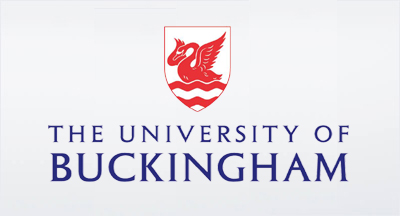
Key Information
Location
Established
Overview
The University of Buckingham is a non-profit private university in Buckingham, England and the oldest of the country’s five private universities. It was founded as the University College at Buckingham (UCB) in 1973, admitting its first students in 1976. Buckingham offers bachelor’s degrees, master’s degrees, and doctorates through five “schools” (or faculties) of study.
Near the centre of the town of Buckingham is the riverside campus, which is partly contained within a south-turning bend of the River Great Ouse. Here, on or just off Hunter Street, are some of the university’s central buildings: Yeomanry House; the Anthony de Rothschild building (which contains Humanities); the Humanities Library; and also some of the student accommodation, looking northwards across the river. Prebend House, a recently restored Georgian house, contains the Vice-Chancellor’s office. On the other side of Hunter Street, on the so-called ‘island’, is the Tanlaw Mill, one of the university’s social centres – with the main refectory, the Fitness Centre, and the Students’ Union Office.
Overlooking this site, on the hill above, is the extensive Chandos Building. This complex contains the Medical School. It also houses the Ian-Fairburn Lecture Theatre, the largest lecture theatre on the river-side site.
The university’s schools are: Education; Law; Humanities; Arts and Languages; Business; and Science and Medicine. Each of these is presided over by a Dean.
The quality of the university’s provision is maintained, as at other UK universities, by an external examiner system, by an academic advisory council, and by membership of the Quality Assurance Agency for Higher Education (QAA).
